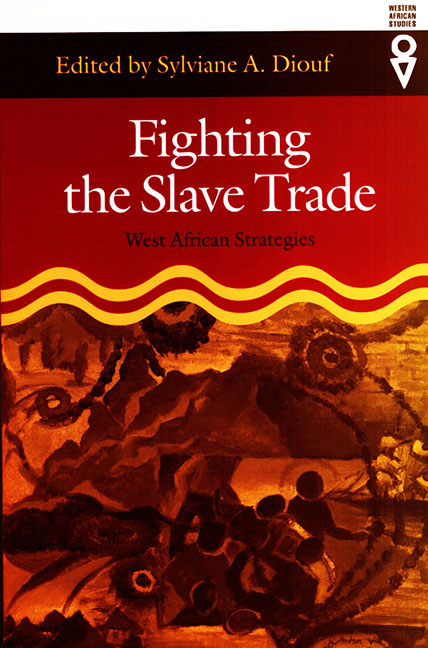Book contents
- Frontmatter
- Contents
- Preface
- Introduction
- PART 1 DEFENSIVE STRATEGIES
- PART 2 PROTECTIVE STRATEGIES
- 6 The Last Resort: Redeeming Family and Friends
- 7 Anglo-Efik Relations and Protection against Illegal Enslavement at Old Calabar, 1740–1807
- PART 3 OFFENSIVE STRATEGIES
- Epilogue: Memory as Resistance: Identity and the Contested History of Slavery in Southeastern Nigeria, an Oral History Project
- Contributors
- Index
7 - Anglo-Efik Relations and Protection against Illegal Enslavement at Old Calabar, 1740–1807
from PART 2 - PROTECTIVE STRATEGIES
Published online by Cambridge University Press: 30 August 2017
- Frontmatter
- Contents
- Preface
- Introduction
- PART 1 DEFENSIVE STRATEGIES
- PART 2 PROTECTIVE STRATEGIES
- 6 The Last Resort: Redeeming Family and Friends
- 7 Anglo-Efik Relations and Protection against Illegal Enslavement at Old Calabar, 1740–1807
- PART 3 OFFENSIVE STRATEGIES
- Epilogue: Memory as Resistance: Identity and the Contested History of Slavery in Southeastern Nigeria, an Oral History Project
- Contributors
- Index
Summary
Get Slaves honestly, if you can,
And if you cannot get them honestly,
Get them.
—Traditional sayingRESISTANCE BY ENSLAVED AFRICANS to their status has been an important theme in the literature on transatlantic slavery. Most attention has focused on rebellion and other forms of resistance by slaves in the Americas, where evidence of such activities is perhaps most readily found. Resistance by enslaved Africans onboard ship and within Africa itself is attracting increasing attention, too, as violent and nonviolent forms of resistance come to be recognized as common to each stage of transatlantic slavery. Transatlantic slavery was shaped, however, by both African resistance to and participation in the processes that resulted in the shipment of up to twelve million Africans as slaves to the Americas. Africans were, in other words, both victims and suppliers of the Atlantic slave trade. While the resistance of the enslaved to their conditions on the African coast has been recognized, the ways in which the slave suppliers protected themselves against seizure and deportation has received scant attention. It is difficult to believe that in the absence of such forms of protection—and the security for suppliers that it created—the Atlantic slave trade could have reached the scale it did at its height, between 1750 and 1850. Understanding how certain groups were able to protect themselves from arbitrary enslavement also yields insights into the political economy of slave trading in Africa. In particular, it exposes not only how the risks of participation in the slave trade were managed but also how profits from that trade were distributed and how it influenced African economic development.
In focusing on those who directed the trade in Africa, we recognize that it is not always easy to see the mechanisms by which people tried to protect themselves against enslavement. Sometimes protection involved efforts to enslave others considered as enemies. Sometimes protective measures may have given the appearance of resistance to the slave trade, notably in safeguarding the status of privileged groups, which clearly was not a challenge to the institution of slavery itself. At some ports along the Atlantic coast it is possible, nevertheless, to disentangle those who were protected from enslavement from those who were not.
- Type
- Chapter
- Information
- Fighting the Slave TradeWest African Strategies, pp. 101 - 118Publisher: Boydell & BrewerPrint publication year: 2004

